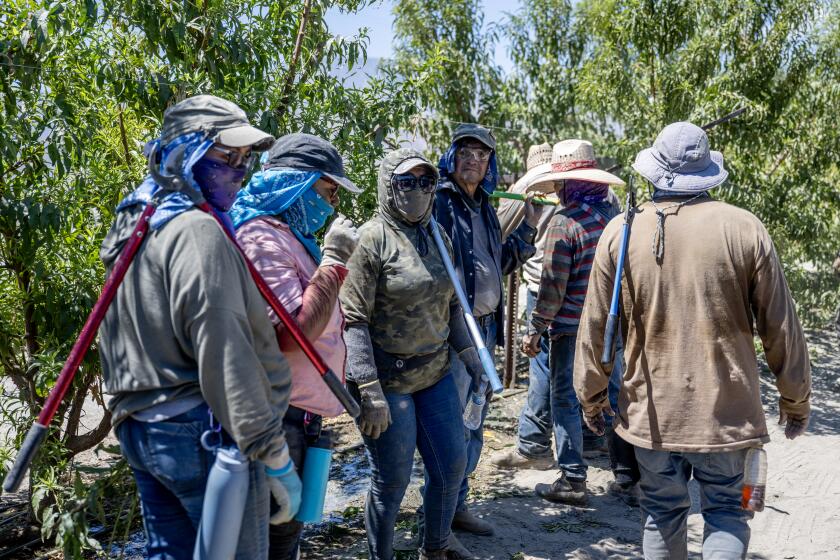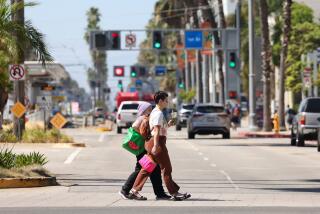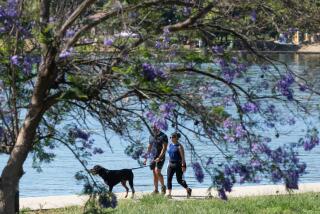As heat waves increase, Los Angeles is coating some streets with ‘cool pavement’

- Share via
As heat waves become more intense and frequent with climate change, cities across Southern California and the Southwest have been trying to ramp up heat protections, such as more shade and cooling centers.
The Los Angeles Bureau of Street Services, called StreetsLA, has been testing a lesser-known solution that reduces heat from the ground up: so-called cool pavement — a coating that reflects infrared light from the sun to minimize heat absorption.
Since 2017, StreetsLA has worked with various contractors to lay out 181 lane-miles of the solar-reflective coating.
In the last two years, the bureau put down cool pavement in parts of Pacoima, Reseda, Wilmington, East Hollywood, Westchester, Palms, Koreatown, Lake Balboa, Chatsworth, North Hills and Atwater, said Ana Tabuena-Ruddy, assistant director and chief sustainability officer of StreetsLA.
Pacoima, a low-income, predominantly Latino community in the San Fernando Valley, had the coating installed in key areas last summer and saw it put to the test this summer in the dog days of July and August.
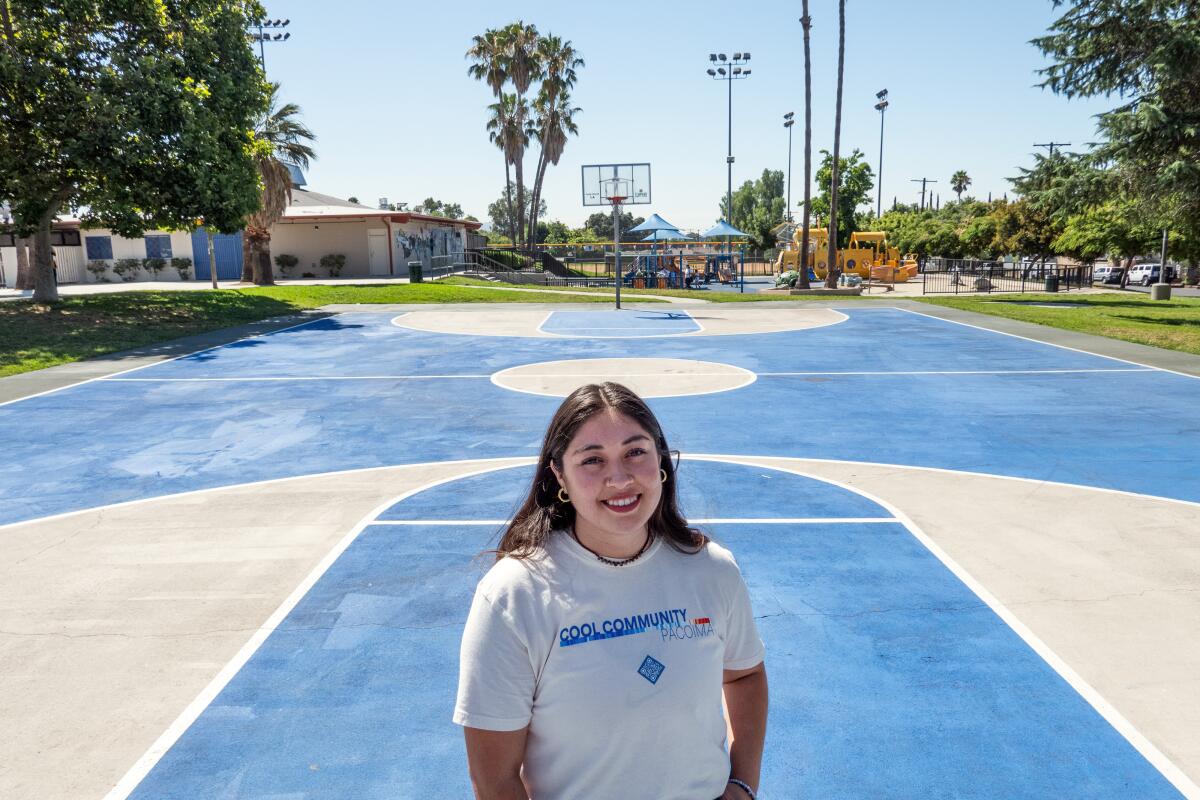
In a public-private partnership involving StreetsLA, Climate Resolve and Pacoima Beautiful, GAF roofing laid out more than 700,000 square feet of cool pavement in 10 neighborhood blocks, the parking lot and basketball court at Hubert H. Humphrey Memorial Park and the parking lots and playground at Hillery T. Broadous Elementary School.
By reflecting the infrared spectrum of sunlight, the pavement reduces ambient air temperature up to 6 feet from the ground by 1.5 degrees on normal sunny days, and up to 3.5 degrees on days that are extremely hot, according to GAF, which makes the coating. The cooling benefits extend downwind of the coated areas as well.
But with temperatures climbing into triple digits, the coating is just a small measure combating the dangers of extreme heat. Experts say cities need a web of overlapping solutions to keep residents cool.
As climate change pushes temperatures to increasing extremes, farmworkers in the Coachella Valley are being exposed to dangerous heat at work and at home.
For one, the coating is less effective on high-traffic streets, as tire marks ruin it, Tabuena-Ruddy said. For future expansion, StreetsLA will stick with local streets and concentrate on high-heat locations with minimal shade.
In 2024, StreetsLA plans to deploy cool pavement in areas such as Fairfax and Boyle Heights, concentrating on high-heat locations with minimal shade, Tabuena-Ruddy said.
In Pacoima, it’s not clear whether residents have noticed any effects from the pavement in its first full summer in use. Many neighbors around Pacoima’s Hubert Humphrey park were still not aware it existed.
Nonprofit Pacoima Beautiful hopes to change that with further outreach, which it has already started to ramp up.
Daniel Hart, a Parks and Recreation Department worker at Hubert Humphrey park, said more people have emerged from their homes and ventured to the park to play basketball and enjoy outdoor activities.
Low-income communities of color disproportionately bear the brunt of heat, and Pacoima is one of the hottest neighborhoods in Los Angeles.
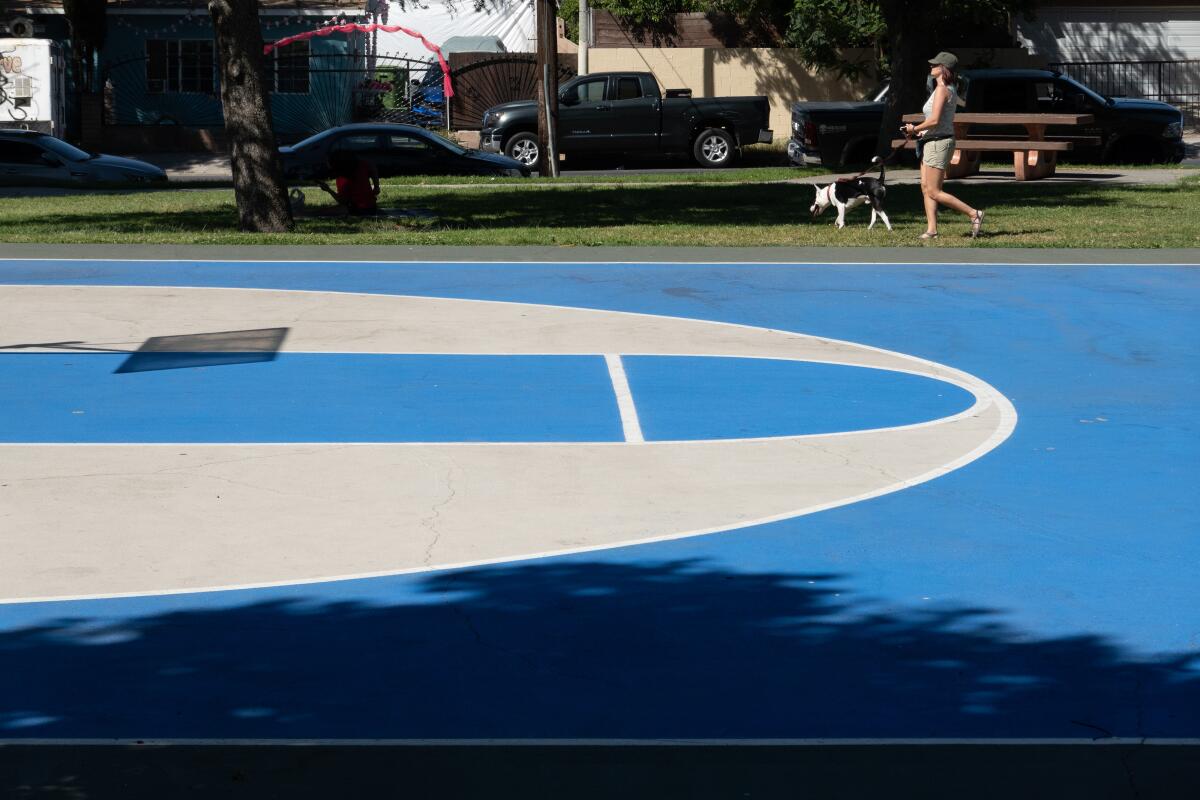
Pacoima “is a community that’s not received a tremendous amount of investment,” said Jeff Terry, a vice president at GAF. “Pacoima Beautiful helped to introduce us to the residents of this neighborhood into this community and we really wanted to kind of understand from them directly what kind of pain points they had in their community. It ultimately just reassured the fact Pacoima was a great place to bring this initiative.”
Melanie Torres, a community organizer with Pacoima Beautiful, hopes that Pacoima can serve as a model for other communities to combat soaring temperatures.
“We have solutions now that are being brought in so I think that’s a major plus coming from Pacoima,” she said.
More to Read
Sign up for Essential California
The most important California stories and recommendations in your inbox every morning.
You may occasionally receive promotional content from the Los Angeles Times.
